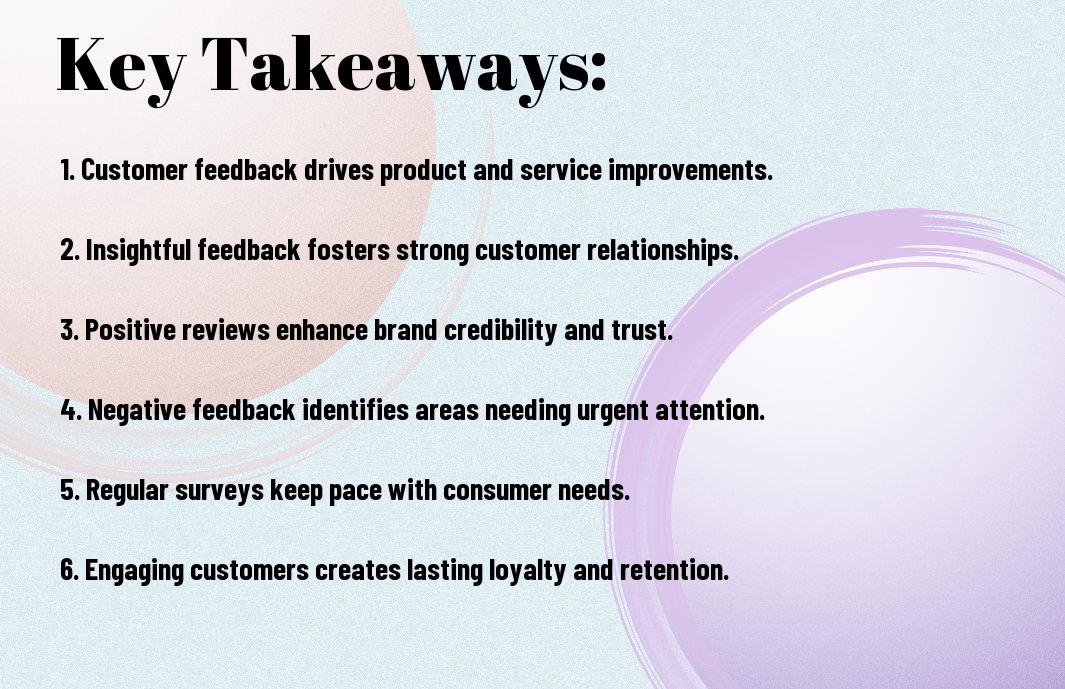There’s a powerful formula that can help you assess the profitability of your business investments: Return on Investment (ROI). Understanding how to calculate ROI allows you to make informed decisions, ensuring that your financial resources are allocated effectively. In this post, you will learn step-by-step how to evaluate your investments, enabling you to determine which opportunities provide the best returns and align with your strategic goals. Mastering ROI calculation is crucial for optimizing your financial performance and driving your business success.

Key Takeaways:
- Define ROI: Understand that ROI (Return on Investment) is a performance measure used to evaluate the efficiency of an investment. It is calculated by dividing the net profit from the investment by the total cost of the investment.
- Utilize a Simple Formula: The basic formula for calculating ROI is: (Net Profit / Cost of Investment) x 100. This gives you a percentage that makes it easy to compare different investments.
- Consider Timeframe: Always factor in the timeframe when calculating ROI. A higher ROI over a shorter period might be more attractive than a slightly higher ROI over a longer period, depending on business goals.

Understanding ROI
A clear understanding of Return on Investment (ROI) is important for any business professional looking to maximize profitability. ROI is a financial metric that evaluates the efficiency of an investment by measuring the gain or loss generated relative to its cost. This simple yet powerful analysis allows you to compare different investments or projects and make informed decisions that align with your financial goals.
Definition of ROI
Among the various financial metrics, Return on Investment (ROI) stands out as a straightforward calculation of the profitability of an investment. It is expressed as a percentage, determined by dividing the net profit from the investment by the initial cost and multiplying by 100. This metric provides insight into how effectively your investment is performing, enabling you to assess the potential return on capital deployed.
Importance of ROI in Decision Making
At its core, ROI serves as a fundamental tool in making informed business decisions. By analyzing ROI, you gain clarity on which investments generate the most profit relative to their costs, guiding your capital allocation choices. This metric not only helps in evaluating past investments but also aids in forecasting the potential success of future ventures, ensuring that your financial resources are strategically utilized.
To make the best possible investment decisions, understanding ROI allows you to prioritize projects that yield better returns and identify areas where adjustments may be necessary. By focusing on investments with a high ROI, you can enhance your overall financial performance and growth potential. Moreover, it equips you with the confidence to justify your choices to stakeholders, thereby fostering a culture of data-driven decision-making within your organization.
Components of ROI Calculation
Some of the key components of ROI calculation include the initial investment and the net profit generated from that investment. Understanding these elements will empower you to accurately assess the effectiveness of your business investments, ensuring that you make informed decisions moving forward.
Initial Investment
Across all business investments, the initial investment encompasses the total costs incurred when starting a project. This may include expenses such as purchasing equipment, marketing costs, and operational expenses. Accurately determining your initial investment is important to calculating ROI effectively.
Net Profit
Any business investment aims to generate net profit, which is the income generated from your investment after deducting all related expenses. This figure is vital for determining the success of your investment. A positive net profit indicates that your project has yielded favorable returns, while a negative net profit signals the need for reevaluation.
It is important to ensure that you calculate net profit accurately by subtracting all operational, maintenance, and overhead expenses associated with your investment from the total revenue generated. This will provide you with a clear picture of your investment’s financial performance, allowing you to make strategic adjustments for future endeavors.
The ROI Formula
Not all investments yield profits, making it vital to assess potential returns. To properly evaluate your investments, you can probe into effective strategies detailed in How to Calculate ROI to Justify a Project – HBS Online.
Basic ROI Formula
With the basic ROI formula, you can easily gauge the effectiveness of an investment. Simply subtract the initial investment cost from the total gain, and then divide that number by the investment cost. Multiply by 100 to get the percentage: (Total Gain – Cost of Investment) / Cost of Investment x 100.
Variations of ROI Calculations
Formula variations provide alternative perspectives on calculating ROI, adapting to different business contexts. You might encounter metrics like annualized ROI, which accounts for the investment’s time period, or adjusted ROI that incorporates risk factors. These variations can enhance your analysis by offering deeper insights into performance.
Hence, understanding the variations of ROI calculations can help you tailor your analysis to your specific investment scenarios. You might decide to use more complex formulas incorporating factors such as net present value (NPV) or internal rate of return (IRR). By considering these alternatives, you can make informed decisions that align with your financial goals.
Factors Influencing ROI
Unlike other metrics, ROI can be influenced by a variety of factors that determine its effectiveness. Understanding these influences will provide you with a clearer picture of your investment performance.
- Investment duration
- Market conditions
- Operational efficiency
- Economic trends
- Competitive landscape
Any of these factors can significantly impact your ROI calculation.
Time Horizon
At the core of ROI is the time horizon you set for your investments. A shorter time frame may lead you to overlook long-term potential gains, whereas a longer horizon allows for appreciation and compounding effects that can enhance your overall returns.
Market Conditions
Across various sectors, market conditions play a vital role in determining ROI. Economic downturns, shifts in consumer preferences, and competitive dynamics can greatly affect your investment’s profitability and should be carefully considered.
The impact of market conditions can be profound; for instance, a recession may diminish demand for your product, leading to lower sales and ultimately decreasing your ROI. Conversely, a booming market can result in heightened demand, propelling your returns higher than anticipated. Therefore, always analyze current and projected market trends to gauge how they might influence your investments.
Real-World Examples
Your understanding of ROI can be greatly enhanced by examining real-world examples from various sectors. For instance, consider how different businesses measure and analyze their returns on investment to inform decision-making and strategize for future growth. Observing these cases can pave the way for a clearer perspective on your own business investments and their potential returns.
ROI in Startups
Startups often operate under tighter budgets and higher risks, making ROI calculations even more vital. When evaluating potential investments, you should assess projected earnings relative to capital expenditures, keeping in mind unique challenges like market competition and product development timelines. These factors are imperative in navigating your startup’s financial landscape while striving for sustainable growth.
ROI in Established Businesses
By assessing ROI in established businesses, you can gain insights into how long-standing companies leverage their capital to maximize returns. With proven track records and existing markets, these businesses might appear to have an edge. Their investments can draw on historical data, allowing for better forecasting and risk assessment, providing valuable lessons for your investment strategies.
But while established businesses benefit from stable revenues, they also face challenges like market saturation and evolving consumer preferences. Your approach should involve closely monitoring performance metrics and market trends to ensure your investments are still aligned with customer needs. Continuously evaluating ROI helps in making informed decisions aimed at sustaining your business’s competitive advantage and fostering growth.
Common Mistakes in ROI Calculation
Once again, calculating Return on Investment (ROI) can be misleading if you overlook common mistakes. Many people either simplify the process too much or ignore vital factors that impact the final number. To improve your ROI calculations, it’s vital to identify and correct these errors, ensuring that your results provide a true reflection of your investments and their effectiveness.
Overlooking Hidden Costs
Among the most frequent errors in ROI calculation is the failure to consider hidden costs associated with your investments. These can include operational expenses, maintenance fees, and training costs, all of which can eat into your profits and skew your ROI figures. By meticulously analyzing all potential costs, you can ensure a more accurate understanding of your investment’s performance.
Misjudging Timeframe
For many investors, misjudging the timeframe in which returns will be realized can lead to significant inaccuracies in ROI assessment. A short-term view may provide an inflated sense of profitability, while ignoring long-term returns may overlook the full potential of your investment.
Considering the timeframe is vital in realizing the true value of your investment. Each project or initiative may yield returns at different intervals; some may result in immediate gains, while others may take longer to appreciate. Failing to assess how quickly you expect to see a return can lead to misguided business decisions. A comprehensive understanding of your investment’s timeframe will allow you to align your expectations and strategies more efficiently.
Final Words
Now that you understand how to calculate ROI for your business investments, you can make informed decisions that enhance your financial outcomes. By consistently evaluating the returns against your costs, you will gain insights that guide your investment strategies. Staying diligent in this process allows you to optimize your resources and maximize the profitability of your ventures. Use this approach to review past investments and plan for future ones effectively.
FAQ
Q: What is ROI and why is it important for business investments?
A: ROI, or Return on Investment, is a financial metric used to evaluate the profitability of an investment. It is calculated by taking the net profit from the investment, subtracting the initial cost of the investment, and then dividing this number by the cost of the investment. ROI provides insight into the effectiveness of an investment by showing how much profit is generated for every dollar spent. This metric is important for businesses as it helps in making informed decisions about where to allocate resources for maximum financial benefit.
Q: How do I calculate ROI for a specific investment?
A: To calculate ROI for a specific investment, follow these steps: First, determine the total gain from the investment, which is the net profit realized. Second, identify the total cost of the investment. Then, apply the ROI formula: ROI = (Net Profit ÷ Cost of Investment) × 100. For example, if you invest $10,000 in a marketing campaign and earn $15,000 in revenue, your net profit would be $5,000. Therefore, your ROI would be: (5,000 ÷ 10,000) × 100 = 50%. This means that for every dollar spent, you made a profit of 50 cents.
Q: Are there limitations to using ROI as a metric for investment analysis?
A: Yes, while ROI is a valuable tool, it does have limitations. One major drawback is that it does not account for the time value of money, meaning it treats all investments as if they were made and returned in a single period. Additionally, ROI does not consider external factors such as market conditions or risks associated with the investment. It also might oversimplify decisions by relying solely on profit without considering other important variables like strategic alignment or long-term growth potential. As such, it is beneficial to use ROI alongside other financial metrics to gain a more comprehensive view of an investment’s effectiveness.








